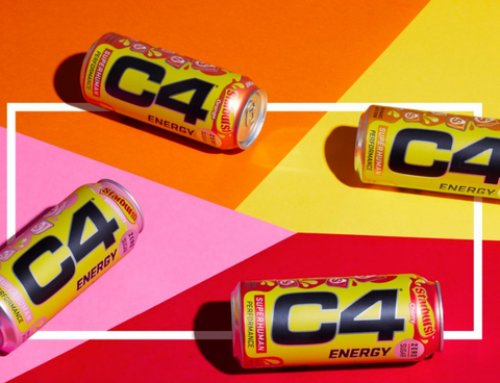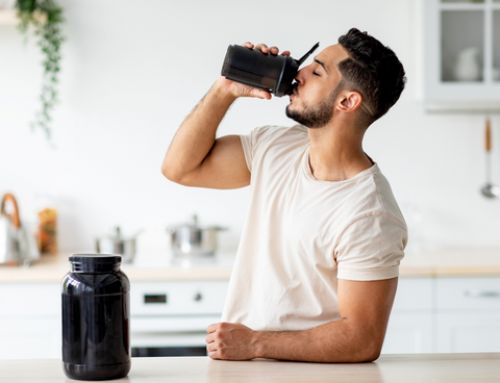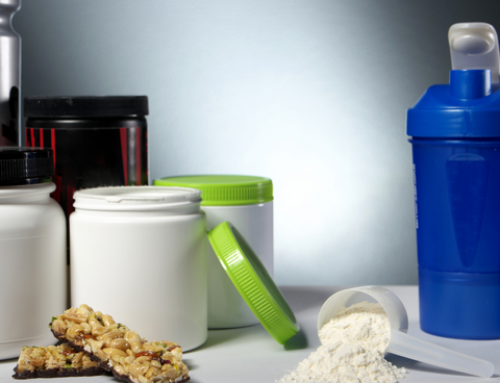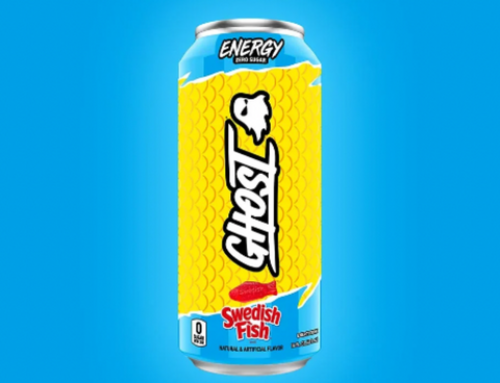5 Rules You Must Know Before Taking a Fish Oil Supplement
Background
In the late 1980s, some of the first field tests of high-grade fish oil supplements took place with athletes in California. Dr. Barry Sears, Ph.D, a former staff scientist at MIT and a medical researcher specializing in the hormonal effects of food and the prevention of cardiovascular disease, worked with Garrett Giemont, then the strength coach for the Los Angeles Rams, and Skip Kenney and Richard Quick, who coached the swim teams at Stanford University.
Sears reviewed biochemistry studies performed by Sune K. Bergström, Bengt I. Samuelsson and John R. Vane that earned the Nobel Prize for Medicine in 1982. The Swedish scientists had explored the powerful physiological effects of inflammation and the role in the immune system of certain eicosanoids known as prostaglandins, which are considered an “autocrine” type of hormone. Rather than being produced by and released from specific sites in the body—like the pancreas—prostaglandins are produced within cells throughout the body.
“Think of eicosanoids as your biological Internet,” Sears says. Like a signaling crew of the central nervous system, they exert extraordinary influence in regard to cellular inflammation.
The upshot for the competitive athlete? Lower levels of inflammation mean increased blood flow, enabling more oxygen transfer. Recovery times improve, endurance improves and health increases. Sears’s first field experiments were conducted circa 1990, but more recent research supports his conclusions. Studies in the American Journal of Clinical Nutrition and the European Journal of Applied Physiology report that fish oil supplementation increases blood flow up to 36 percent during exercise and lowers the levels of inflammatory markers.
In his early work with the Los Angeles Rams and the Stanford swim team, Sears studied how taking long-chain omega-3 fatty acids (i.e., the good stuff in fish oil) might help athletes by “modulating” eicosonoids. In other words, Sears believed that fish oil would help the athletes reduce their cellular inflammation levels.
As Sears communicated to Giemont, Kenney and Quick, a reduction in cellular inflammation should lead to a slew of performance benefits, including strength gains, more endurance, less pain and speedier recovery.
During his early work with the Stanford athletes, Sears said he found a crucial lever necessary to achieve the hormonal control intended with fish oil supplementation—diet. For example, swimmers with exceptionally high carbohydrate intake levels, which spiked insulin, did not achieve consistent results from the fish oil.
“I went into the bowels of the MIT library and found the data that showed us what was going on,” Sears said. “If you have high levels of insulin, you’ll drive the anti-inflammatory eicosanoids into becoming inflammatory. So unless I controlled the diet I would not be able to control inflammation.”
Thus, in combination with fish oil supplementation, Sears advised athletes to eat a moderate level of carbohydrates balanced by moderate amounts of protein and fat. As he reported in his book, The Omega RX Zone, the football players, accustomed to eating more meat and protein, were generally more open to this diet than the swimmers. As reported in 1993 by Swim magazine, the Stanford swimmers who took fish oil supplements and followed a diet with moderate (as opposed to high) carb intake accounted for seven gold medals in the 1992 Olympics. From Kenney and Quick’s point of view, the diet and fish oil made a critical difference for their athletes.
Also affirming the potent effects of fish oil was Doug Smith, a six-time Pro-Bowl offensive lineman for the Rams, who reportedly told Garrett, “Coach, I’ve got to quit taking this stuff, because I am getting stronger in the middle of the season, and that just doesn’t happen.” Assured that the fish oil supplements contained no PEDs, just omega-3 fatty acids, Smith continued the regimen.
Sears has worked with world-class athletes ever since, including swimmer Dara Torres, who won two gold medals in 2000 at the age of 34 and three silver medals at the 2008 Olympics at 41. More recently, Sears advised Team Cervélo, a UCI Tour de France cycling squad, which had implemented an aggressive anti-doping program, on anti-inflammation protocols.
“When you’re talking about an endurance event, whether it’s the Ironman, an ultramarathon or the Tour de France, it’s about who can produce the most energy,” Sears says.
Fish Oil Rules
The following are Dr. Sears’s pointers for athletes wishing to increase their performance and recovery through fish oil supplementation.
1. Control your insulin. Make sure each meal and each snack has moderate amounts of protein, carbohydrate and fat. Excessively high carbohydrate concentrations—like what you get if you eat a massive bowl of pasta—will spike your insulin level and raise your cellular inflammation level. Moderation is the key word. “It’s basically your grandmother’s diet,” says Dr. Sears.
2. Get a fasting cholesterol blood test to determine how much fish oil to take. Look at your triglyceride/HDL ratio. HDL is the so-called “good cholesterol.” In adults, this ratio should be less than 2. Per Sears’s protocol, if the TG/HDL ratio is less than 2, supplement with 2.5 grams of long-chain omega-3 fatty acids each day; if the ratio is higher than 2, supplement with five grams of good fish oil for 30 days, then reduce the dosage to 2.5 grams per day.
3. Supplement with 10 mg of GLA per day. GLA is gamma linolenic acid. Sears says that supplementing with fish oil can decrease natural production of GLA, an important building block for the production of “good” eicosanoids. Another way to make up for the deficit is to eat 2 bowls of slow-cooked oatmeal every week.
4. Check the TG/HDL ratio every six months. The goal, Dr. Sears says, is to keep this ratio between 1 and 2 for optimal inflammation modulation.
5. Use high-grade fish oil. Do your research when selecting fish oil. Poorly filtered fish oil may contain contaminants like PCBs. Dr. Sears suggests the following criteria, which he defines as “Weapons Grade” fish oil:
- Total long-chain omega-3 should be more than 60 percent of total fatty acids
- Mercury = less than 10 parts per billion
- PCBs = less than 5 parts per billion
- Dioxins = less than 1 part per trillion
Read More:
RECOMMENDED FOR YOU
MOST POPULAR
5 Rules You Must Know Before Taking a Fish Oil Supplement
Background
In the late 1980s, some of the first field tests of high-grade fish oil supplements took place with athletes in California. Dr. Barry Sears, Ph.D, a former staff scientist at MIT and a medical researcher specializing in the hormonal effects of food and the prevention of cardiovascular disease, worked with Garrett Giemont, then the strength coach for the Los Angeles Rams, and Skip Kenney and Richard Quick, who coached the swim teams at Stanford University.
Sears reviewed biochemistry studies performed by Sune K. Bergström, Bengt I. Samuelsson and John R. Vane that earned the Nobel Prize for Medicine in 1982. The Swedish scientists had explored the powerful physiological effects of inflammation and the role in the immune system of certain eicosanoids known as prostaglandins, which are considered an “autocrine” type of hormone. Rather than being produced by and released from specific sites in the body—like the pancreas—prostaglandins are produced within cells throughout the body.
“Think of eicosanoids as your biological Internet,” Sears says. Like a signaling crew of the central nervous system, they exert extraordinary influence in regard to cellular inflammation.
The upshot for the competitive athlete? Lower levels of inflammation mean increased blood flow, enabling more oxygen transfer. Recovery times improve, endurance improves and health increases. Sears’s first field experiments were conducted circa 1990, but more recent research supports his conclusions. Studies in the American Journal of Clinical Nutrition and the European Journal of Applied Physiology report that fish oil supplementation increases blood flow up to 36 percent during exercise and lowers the levels of inflammatory markers.
In his early work with the Los Angeles Rams and the Stanford swim team, Sears studied how taking long-chain omega-3 fatty acids (i.e., the good stuff in fish oil) might help athletes by “modulating” eicosonoids. In other words, Sears believed that fish oil would help the athletes reduce their cellular inflammation levels.
As Sears communicated to Giemont, Kenney and Quick, a reduction in cellular inflammation should lead to a slew of performance benefits, including strength gains, more endurance, less pain and speedier recovery.
During his early work with the Stanford athletes, Sears said he found a crucial lever necessary to achieve the hormonal control intended with fish oil supplementation—diet. For example, swimmers with exceptionally high carbohydrate intake levels, which spiked insulin, did not achieve consistent results from the fish oil.
“I went into the bowels of the MIT library and found the data that showed us what was going on,” Sears said. “If you have high levels of insulin, you’ll drive the anti-inflammatory eicosanoids into becoming inflammatory. So unless I controlled the diet I would not be able to control inflammation.”
Thus, in combination with fish oil supplementation, Sears advised athletes to eat a moderate level of carbohydrates balanced by moderate amounts of protein and fat. As he reported in his book, The Omega RX Zone, the football players, accustomed to eating more meat and protein, were generally more open to this diet than the swimmers. As reported in 1993 by Swim magazine, the Stanford swimmers who took fish oil supplements and followed a diet with moderate (as opposed to high) carb intake accounted for seven gold medals in the 1992 Olympics. From Kenney and Quick’s point of view, the diet and fish oil made a critical difference for their athletes.
Also affirming the potent effects of fish oil was Doug Smith, a six-time Pro-Bowl offensive lineman for the Rams, who reportedly told Garrett, “Coach, I’ve got to quit taking this stuff, because I am getting stronger in the middle of the season, and that just doesn’t happen.” Assured that the fish oil supplements contained no PEDs, just omega-3 fatty acids, Smith continued the regimen.
Sears has worked with world-class athletes ever since, including swimmer Dara Torres, who won two gold medals in 2000 at the age of 34 and three silver medals at the 2008 Olympics at 41. More recently, Sears advised Team Cervélo, a UCI Tour de France cycling squad, which had implemented an aggressive anti-doping program, on anti-inflammation protocols.
“When you’re talking about an endurance event, whether it’s the Ironman, an ultramarathon or the Tour de France, it’s about who can produce the most energy,” Sears says.
Fish Oil Rules
The following are Dr. Sears’s pointers for athletes wishing to increase their performance and recovery through fish oil supplementation.
1. Control your insulin. Make sure each meal and each snack has moderate amounts of protein, carbohydrate and fat. Excessively high carbohydrate concentrations—like what you get if you eat a massive bowl of pasta—will spike your insulin level and raise your cellular inflammation level. Moderation is the key word. “It’s basically your grandmother’s diet,” says Dr. Sears.
2. Get a fasting cholesterol blood test to determine how much fish oil to take. Look at your triglyceride/HDL ratio. HDL is the so-called “good cholesterol.” In adults, this ratio should be less than 2. Per Sears’s protocol, if the TG/HDL ratio is less than 2, supplement with 2.5 grams of long-chain omega-3 fatty acids each day; if the ratio is higher than 2, supplement with five grams of good fish oil for 30 days, then reduce the dosage to 2.5 grams per day.
3. Supplement with 10 mg of GLA per day. GLA is gamma linolenic acid. Sears says that supplementing with fish oil can decrease natural production of GLA, an important building block for the production of “good” eicosanoids. Another way to make up for the deficit is to eat 2 bowls of slow-cooked oatmeal every week.
4. Check the TG/HDL ratio every six months. The goal, Dr. Sears says, is to keep this ratio between 1 and 2 for optimal inflammation modulation.
5. Use high-grade fish oil. Do your research when selecting fish oil. Poorly filtered fish oil may contain contaminants like PCBs. Dr. Sears suggests the following criteria, which he defines as “Weapons Grade” fish oil:
- Total long-chain omega-3 should be more than 60 percent of total fatty acids
- Mercury = less than 10 parts per billion
- PCBs = less than 5 parts per billion
- Dioxins = less than 1 part per trillion
Read More:












